Hyperpigmentation
Hyperpigmentation treatment refers to a range of therapies used to reduce the appearance of darkened patches on the skin caused by excess melanin production.

What is Hyperpigmentation Treatment?
Hyperpigmentation treatment refers to a range of therapies used to reduce the appearance of darkened patches on the skin caused by excess melanin production. These patches can result from sun damage, inflammation, hormonal changes, or aging.
Common forms include melasma, sunspots, and post-inflammatory hyperpigmentation. Treatments are customized based on the underlying cause, skin type, and desired results.
Topical treatments:
- Hydroquinone: A powerful skin lightening treatment to fade stubborn pigmentation.
- Retinoids (tretinoin, adapalene): Retinol for dark spots (and other vitamin A derivatives) increase cell turnover and help reduce hyperpigmentation.
- Azelaic acid: Effective for acne-prone skin and as melasma treatment, it also calms inflammation.
- Kojic acid, vitamin C, niacinamide: These antioxidants and brighteners are commonly found in brightening skincare products and vitamin C serum for pigmentation.
Procedural treatments:
- Chemical peels for dark spots exfoliate the skin to lighten pigmentation.
- Microdermabrasion: A non-invasive exfoliation method for mild skin discoloration treatment.
- Laser therapy (e.g., Q-switched lasers): Used in pigmentation laser therapy for deeper pigment issues.
- Intense Pulsed Light (IPL): Effective in sunspot correction and overall age spot treatment.
- Lifestyle advice: Wear sunscreen daily, avoid direct sunlight, use protective clothing, and minimize skin trauma for an effective hyperpigmentation skincare routine and lasting results.

Hyperpigmentation Treatment Quick Facts:
| Cost of Hyperpigmentation Treatment | tbd |
|---|---|
| Duration of Treatment | 25-45 minutes |
| Days of Social Downtime | 2-7 days |
| How Long It Lasts | 6-12 months |
| Pain Management | Topical numbing agent |
| Home Care Instructions | Avoid sun exposure |
| No. Of Sessions Required | 4-6 |
| Final Results | Improvement in the appearance of hyperpigmentation |

Combining treatments with good habits—like wearing SPF and following a hyperpigmentation skincare routine—helps prevent recurrence. Over time, these methods work together to reduce uneven skin tone, smooth texture, and enhance overall luminosity.
Hyperpigmentation Treatment Benefits
One of the main benefits is dark spot removal, which targets pigmented areas and gradually lightens them over time. Whether you’re dealing with melasma, sunspots or age spots, personalized therapies can help restore your skin’s natural radiance.
Using brightening skincare products consistently, such as vitamin C serum for pigmentation or hyperpigmentation cream, boosts the results of professional treatments.
These topicals promote a more even skin tone while addressing skin discoloration treatment needs at home. Additionally, retinoids like retinol for dark spots accelerate skin renewal, helping fade pigment faster.
Types of Hyperpigmentation Symptoms Treated
Hyperpigmentation treatment is designed to address a variety of skin pigmentation concerns, each with its own symptoms and underlying causes.
By addressing these symptoms with personalized treatment plans, individuals can achieve noticeable dark spot removal and brighter, more even-toned skin.
Melasma
This condition presents as brown or grayish patches, often on the cheeks, forehead, or upper lip. It typically affects women and is linked to hormones or sun exposure. Melasma treatment may involve brightening skincare products, chemical peels, or laser therapy.
Sunspots (solar lentigines)
Caused by prolonged sun exposure, these flat brown marks respond well to sunspot correction, especially with pigmentation laser therapy or age spot treatment options like IPL.
Post-inflammatory hyperpigmentation
These dark marks appear after acne, eczema, or injury. Chemical peel for dark spots, retinol for dark spots, and skin lightening treatment help fade these over time.
Uneven skin tone
Sometimes not limited to defined spots, unevenness can occur across the face. Skin discoloration treatment and a strong hyperpigmentation skincare routine with vitamin C serum can help restore balance.
ELEGIBILITY Who is a Good Candidate
You may be a good candidate for hyperpigmentation treatment if you struggle with dark spot removal, blotchy patches, or an uneven skin tone that doesn’t respond to basic skincare.
Ideal candidates include individuals dealing with melasma, sunspots, post-inflammatory hyperpigmentation, or signs of aging such as age spots. The right treatment will depend on your skin type, severity of pigmentation, and sensitivity.
If you’re healthy, have realistic expectations, and are committed to ongoing care, you’re likely a strong candidate for hyperpigmentation solutions.
We invite you to book a consultation with one of our Dermatology experts to learn more about hyperpigmentation treatment and if it’s right for you.




